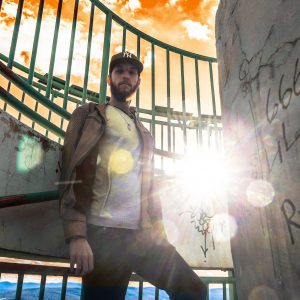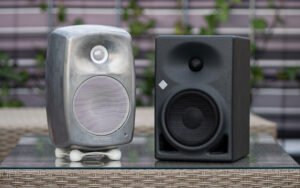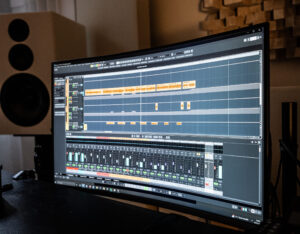Since I’ve started business in this sector it has been a priority to get the most effective marketing video with few expenses as possible. That is because many small businesses and creators that I work with don’t have the budget and time for a big hollywood-style video production but still desperately need content that communicates their benefits and gets attention amongst the right audience.
It has been a pleasant surprise to learn that simple face-to-face communicating content, with a creative twist at best, does not perform bad at all. It is important for businesses to show who they really are, and communicate through their authentic language and not the language of some agency or production team. Here are a few tips on how to structure your content and your actual shoot to guarantee a sucessfull outcome each and every time.
The Script
First you should craft a precise plan of what goals you want to achive in your campaign, what material in what form you are going to shoot in order to achive that, and then focus on covering those key shots until moving to anything else. Let me give you an example. A small wine boutique wants to aquire local customers to try and buy their wines. For more exposure they have planned a monthly tasting-event that showcases new arrivals and local specialties. These types of businesses, by the way, are the ones that are facing an immense threat by big online retailers in the coming years, and have to rely on autheticity, customer service and their own unique story in order to survive. What type of content would we now film for such a business?
Let’s think of a package that would make sense. In order to promote the business itself, the first scene we’ll shoot is a introduction of the business by the CEO. Any small company that is doing a direct communication marketing video should have the head of the company talking. Only if there is somebody that is clearly more up to the job, it could be an employee, but in most cases the owner talking to the customer creates a stronger feeling of trust. That introduction part would be around 20 seconds long talking us briefly through the history of the company, and of course its USP’s.
In the second part of the video we’ll introduce the wine-tasting and give a short explanation of what it is and how to take part. Those two parts in combination, with a final Call-to-Action, will be the video with the main objective to promote the wine tastings. If, on the other hand, we wanted a longer video about the general business without mentioning the events, we’d film another take that has a longer, more detailed explanation of the business and could take up to a minute unedited. Filming multiple takes for different variations of the campaigns objective is important, that way you leave nothing up to chance when editing the pieces together.
What other video content would make sense in the same setting? Maybe the owner will present a selection of 2 to 3 special wines and talk about them. He will then finish with a Call-To-Action , something like “if you want to taste these wines and more, stop by at our store or register for our upcoming tasting event.” That way we’ll create more variation in our Video-Ads without much more effort needed.
Length and Format
When writing your script and planning your video, keep in mind the delivery format to the consumer. To cover all of social media you will need to include:
- 16:9 The full video in it’s native format will be 16:9 and delivered preferably to YouTube. It can have any length but should ideally be between 2 and 5 minutes.
- 1:1 While you can get away with posting widescreen on facebook and co, it is not the ideal format. 1:1 is used on instagram feeds and better for feed-posts.
- 4:5 This is the ideal screen-filling format for feed-posts today. It appears bigger on cellphone-screens than square videos and is preferred in most cases.
Make sure your feed-ad is in either 1:1 or 4:5 format and stays below 1 minute. - 9:16 The story format
For footage that has to be cropped a lot for something like ads, it is recommended to shoot at the highest possible resolution. Social Media doesn’t need super high resolutions, but if you film in 4K you will be able to take a 1:1 or even 9:16 crop without losing quality. Depending on the delivery of your video you might consider not shooting a widescreen version at all, and rather film vertically from the start. If you do shoot widescreen and plan to crop a story-format later, pay close attention to the composition of the shot, because it will look drastically different once cropped to 9:16.
The Shoot
First of all, we always shoot a couple stills of the shopfront, and inside the store. Also a team-photo if needed. Don’t rely on taking pics during the video shoot because that will be forgotten mostly. When taking these stills is also a good opportunity to take the same stills as video B-roll. That’s gives us the chance to scan the place for good locations as we get ready for the real action.
For the main shot the most important factors are location, light and sound. The location has to be representative of the business in question, it could be the main office, in front of the store, or it could be something completely different, if the message communicated is still clear – be creative! The one thing that differentiates amateurish looking shots from professional ones, is mostly lighting.
When shooting your script pay close attention to the way you could cut single takes. It usually would not recommend mixing different parts of various takes, because the differences are in many cases noticeable, however you might get away with it, if you can mask the transition with some B-roll. Getting a perfect take in from start to finish in important.
Equipment Recommendations
There is no right or wrong choice for equipment as long as you can come to the result that you want. However, below is a small list of affordable equipment I have personally used over the years and can recommend if you don’t want to spend a fortune. There is specifically no recommendation when it comes to camera and lens, because that is a very individual decision where many factors come into play.
Moman RGB portable Led-Video Light
This small but powerful video light is super flexible and because of its RGB-capability can also be used to set the mood with colored light. Don’t be fooled by its size, it can get pretty bright and is highly portable. It can be mounted on top of your camera or on a stand, and is especially useful if you need a light on-the-go. It charges quickly via USB 3.0 and can even be used as a power bank. Additional features like strobe and police-light make it is an overall great choice for backup-lighting. I’ve used this light many times, even as my only source of light on small projects where I couldn’t bring much equipment. When you have two you become even more flexible. It is built like a tank and at 99 Euros an investment I would take again any time.
Neewer 660 LED Video Light set with stands, 2 pcs
Neewer specializes in low-cost equipment, alternatives to the highly priced professional counterparts, yet still with high quality and great functionality. If you are an aspiring photographer or videomaker, you will most likely come across Neewer when looking for affordable equipment. This set contains 2 pieces of flat battery-powered LED-Panels, a great choice as your main light-source for small and medium-sized video projects.
Feiyutech AK2000S Gimbal
At 350 Euros a quality gimbal is not a cheap piece of gear. However, a gimbal can significantly improve your shots by delivering super-smooth camera movements. I’ve had great experience with Feiyutech in terms of their product quality and customer support, especially at this mid-level price point. Before gimbals were invented, smooth stabilized camera movements were almost a dead-giveaway of an expensive video-productions. The only way to achieve these shots was by using a camera-crane, a full-body steadycam setup, or at least a heavy camera-rig that make smooth movements easier. With gimbals came along the possibility to replicate these shots with a small handheld device. They do require some time to get used to so you don’t get weird movements in your shot. Also consider that using a gimbal slows you down because it needs time to set up. In certain point and shoot situations it might be cumbersome, and you’d be better off shooting hand-held, especially if your camera has a good stabilizer. However, the possibilities in terms of camera movements definitely increase drastically if you have a gimbal at your disposal.


